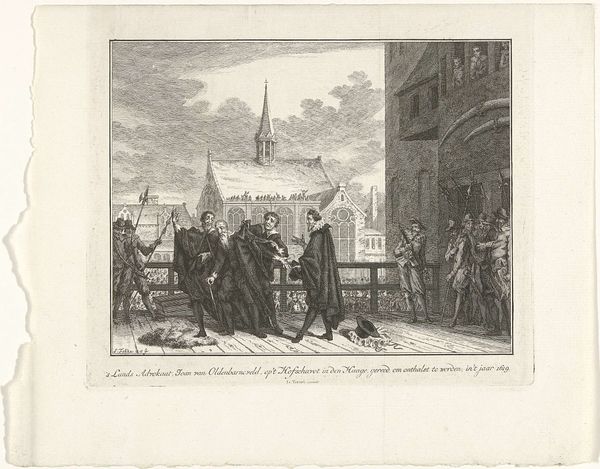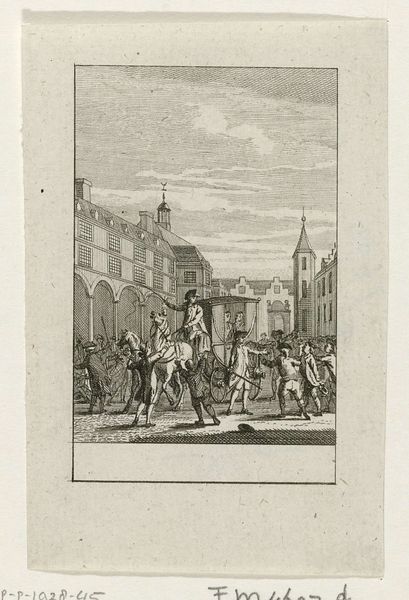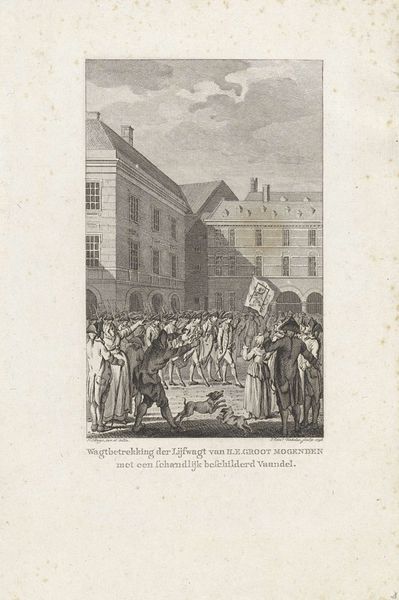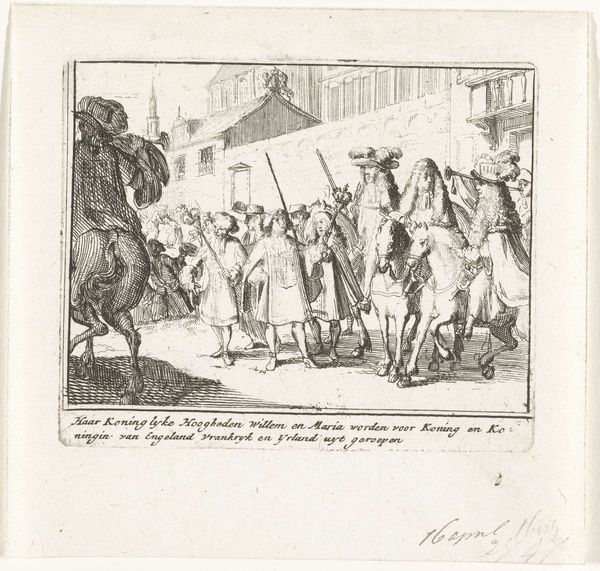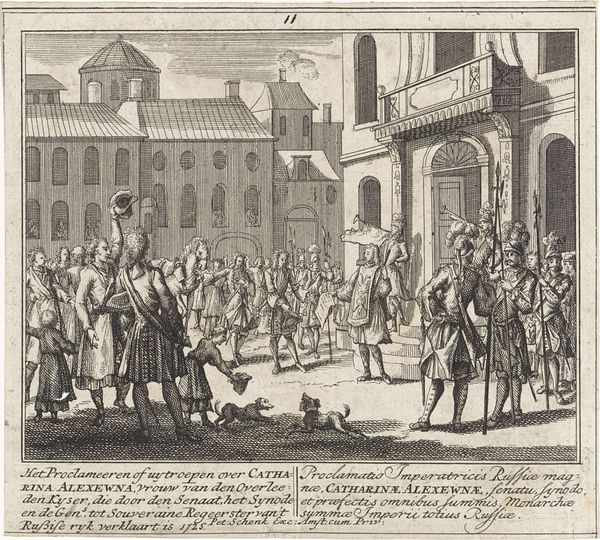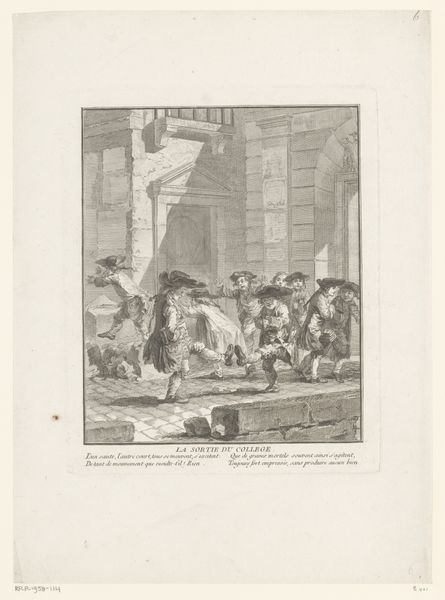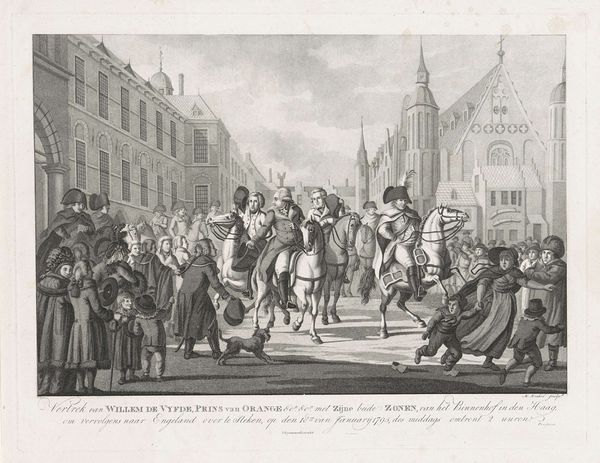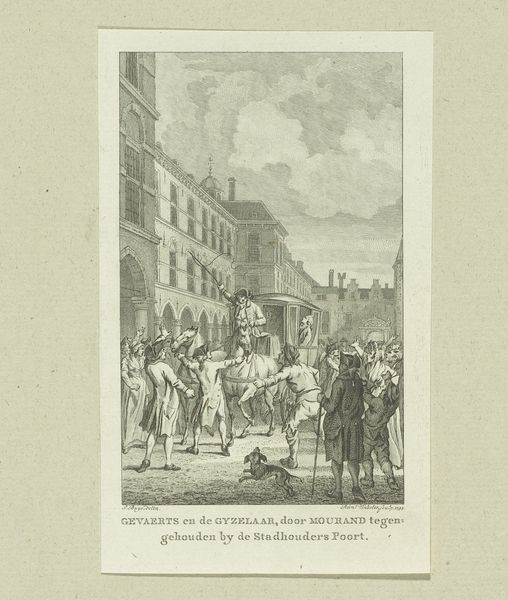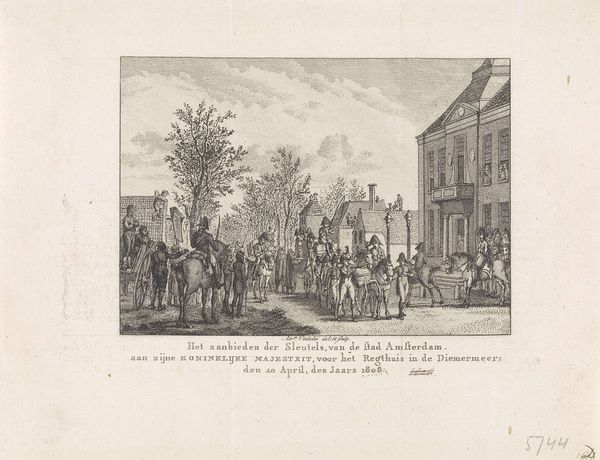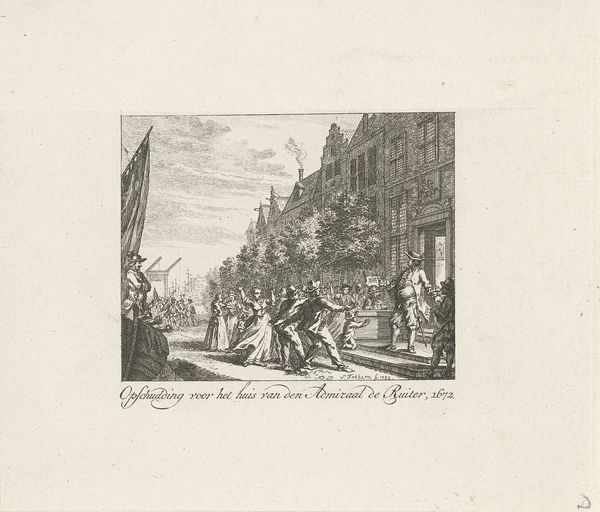
Geweld tussen burgercompagnie en orangisten te Rotterdam, 1784 1784 - 1792
0:00
0:00
print, engraving
#
neoclacissism
# print
#
genre-painting
#
history-painting
#
engraving
Dimensions: height 110 mm, width 123 mm
Copyright: Rijks Museum: Open Domain
Editor: Here we have Jan Evert Grave's engraving, "Geweld tussen burgercompagnie en orangisten te Rotterdam, 1784," created sometime between 1784 and 1792. It depicts violence in the streets of Rotterdam, with armed figures facing off. It feels almost theatrical. How do you interpret this work in the context of its time? Curator: This print offers a glimpse into the tumultuous political climate of the Dutch Republic in the late 18th century. The tension between the Patriot movement, represented here by the citizen militia, and the Orangists, who supported the Stadtholder, often erupted into violent confrontations like the one depicted. Consider this image not merely as a historical record but as a potent visual statement embedded in ideological conflict. How does the artist use the composition to portray one side or the other? Editor: It’s interesting you mention ideological conflict. The figures seem almost staged, but the subject is raw. Does this clash tell us something about its potential propaganda? Curator: Absolutely. Prints like these were widely circulated, influencing public opinion. Think about the artist's choices: the framing, the body language of the figures, the light and shadow. Are these designed to elicit sympathy for one faction over another? Furthermore, to explore the broader scope, it may be helpful to think about gender in civic conflict at the time, given women were excluded from militia. What social factors do we ignore if we accept the depiction on its face? Editor: That's fascinating. I hadn't considered the potential biases embedded within the seemingly straightforward depiction. Thanks, this gives me a lot to consider when I look at art as historical documents. Curator: Exactly! Understanding art in its historical and social context is key to unveiling the power dynamics at play, helping us analyze art beyond aesthetics. It reflects realities that shape our understanding of art.
Comments
No comments
Be the first to comment and join the conversation on the ultimate creative platform.
